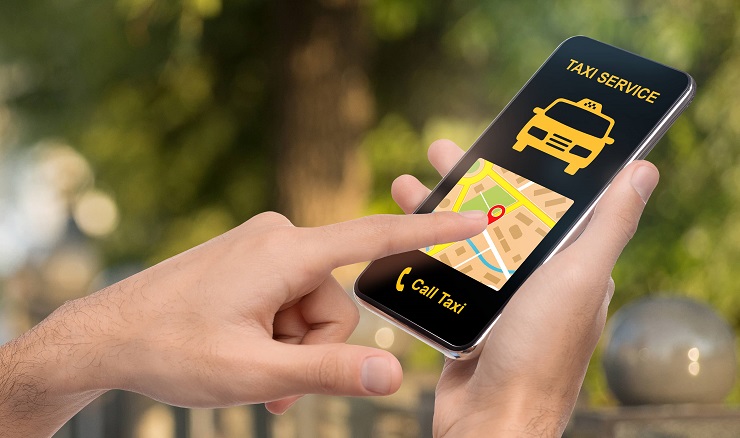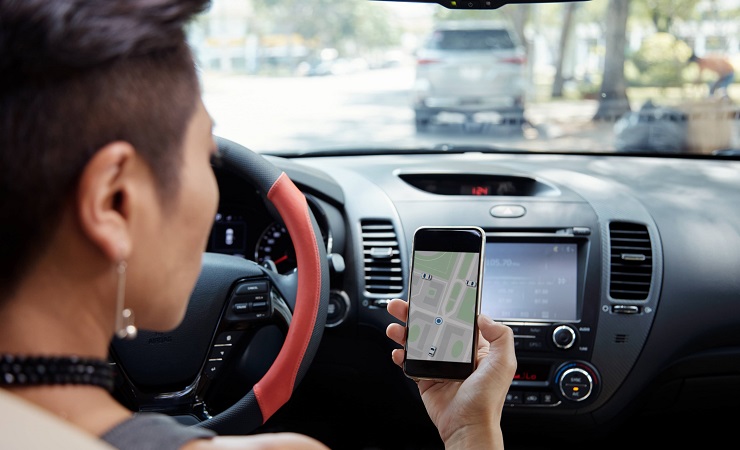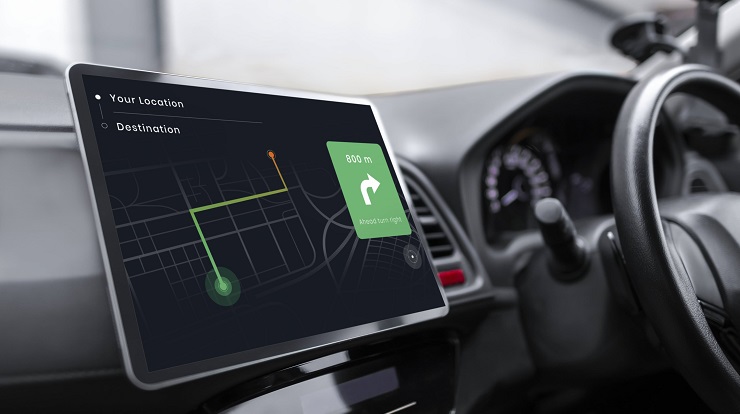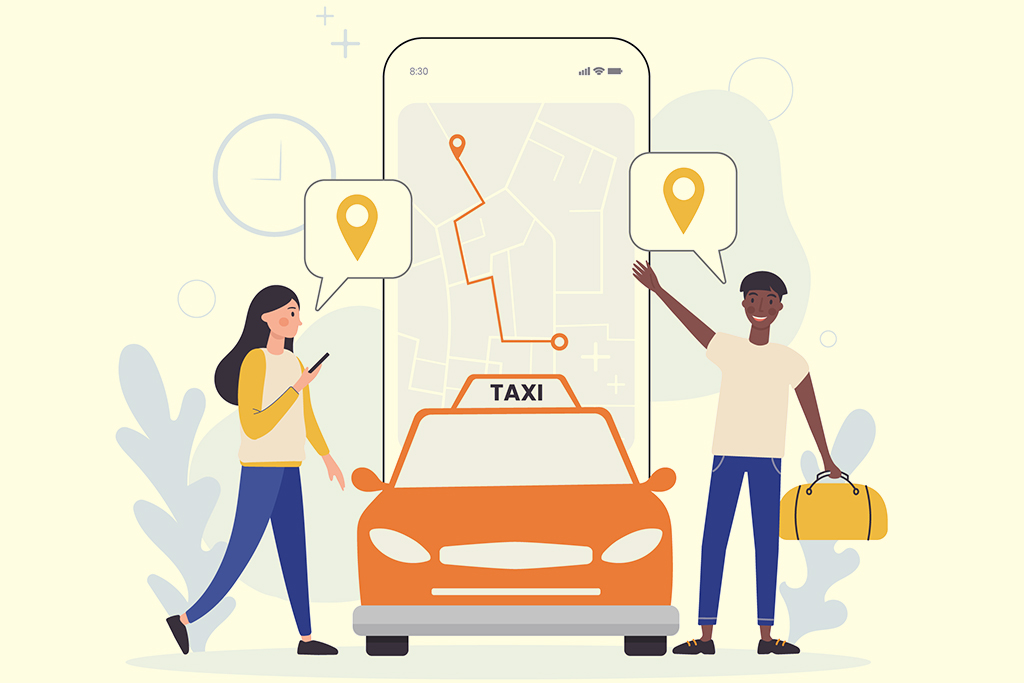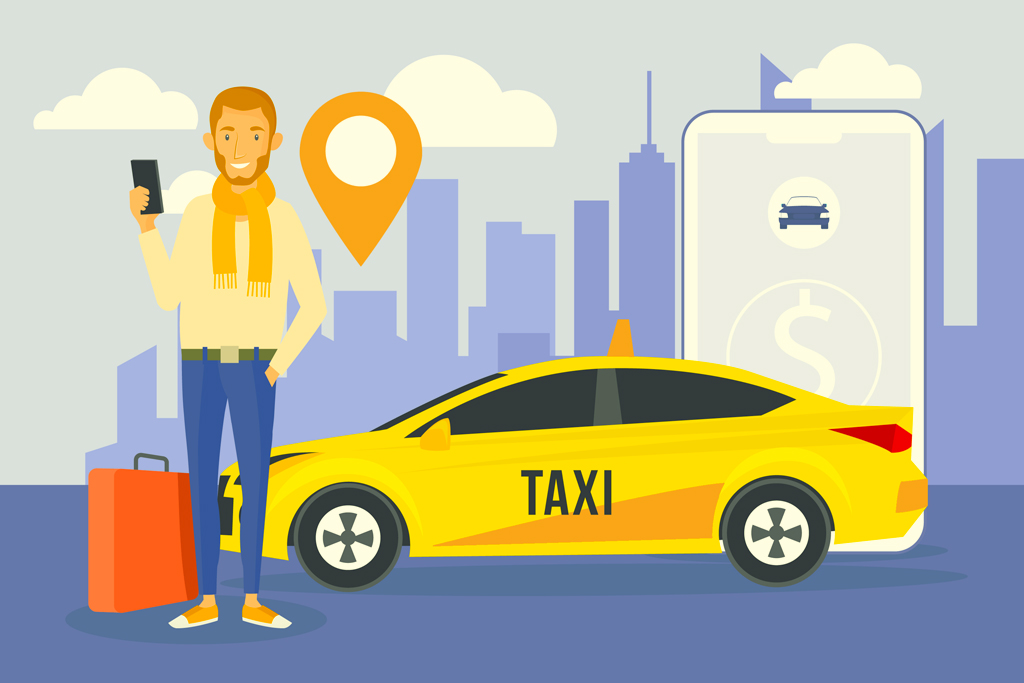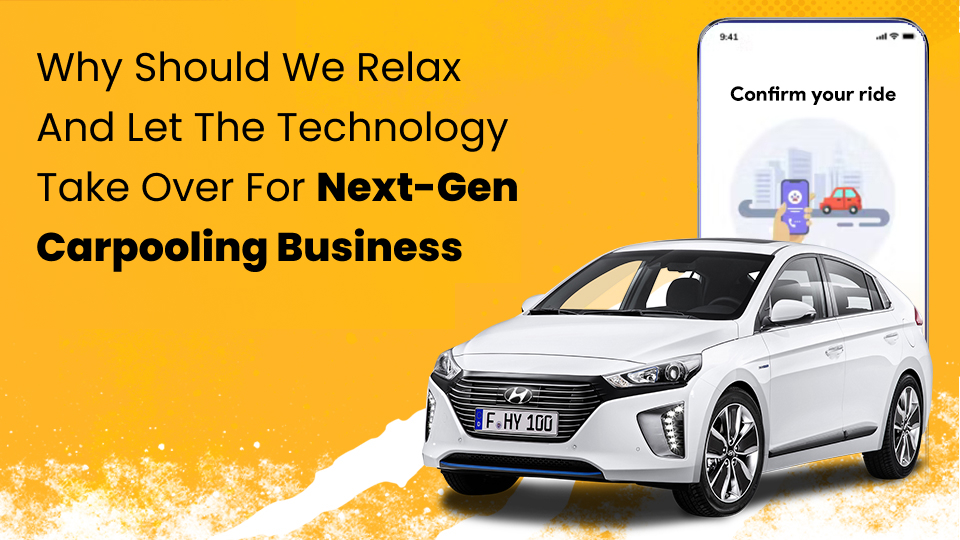
Technology- Driving Your Next-Gen Carpooling Business
As we bid adieu to a tumultuous 2021 and welcome 2022 with a degree of trepidation, it is important that we view the rapid changes around us with a 20/20 vision. Rampant industrialization with inadequate pollution control measures and an over-dependence on hydrocarbon-based fossil fuels are the two main villains of the piece. It is to address the latter, that we turn to our topic of interest- the carpooling business, and how we can harness modern technology to mitigate the ongoing damage to our environment.
Carpooling is sharing one car with two or more people going to the same destination and thus eliminating the need to use multiple polluting vehicles. This reduction of cars on the road leads to a reduction in:
- Energy consumption {33 million gallons (1g= 3.8 li) per annum, per incremental passenger, per car}
- Greenhouse Gas Emissions (7.2 million tons per annum, per incremental passenger, per 100 vehicles)
- Traffic congestion (impacting both the above factors)
Hence, it comes as no surprise that the corporate carpooling business has emerged as a frontrunner amongst new-age businesses since it ticks all the relevant boxes:
- Saves costs of fuel & vehicle maintenance
- Saves commute times
- Reduces commute stress
- Helps the environment by reducing vehicular pollution

This blog examines how it is easier today to plunge into this business with the help of digital technology. Equally, it also tells us how ride-sharing apps have made usage much easier and more convenient by:
- Tracing the market potential and the specific factors influencing the same
- Understanding how the growth of social media is driving the carpooling business
- Learning how to start a lean corporate carpooling business in six weeks
- Looking at the basics of carpooling app development
- Examining what to look for in an app development partner
- Studying the role of technology in Corporate carpooling app development
The Future Of Technology & Mobility
Mobility is poised to get a lot more interesting. This sector could see a major transformation in the next decade or so, significantly altering the current design of the transportation industry and catalyzing the shift from owning/leasing) a vehicle as a product to consuming mobility as a service. Four technological innovations are rapidly redrawing the map of modern mobility:
- Autonomous vehicles (AVs)
- Connected cars
- Electric vehicles (EVs)
- Shared- mobility services.
These technologies will possibly converge in the ‘30s—think self-driven, connected, e-robo-taxis—and constitute the future of personal mobility (estimated U.S. market size $1.5- 2 trillion). Meanwhile, technologies like AI, IoT, MQTT, & location finding, tracking, and payment apps will be at the forefront of driving shared mobility.
Ride-Sharing Potential And Influencing Factors
It is predicted that rising passenger density, reduced vehicle footprint, and the technological innovations referred to above will usher in strong growth for the carpooling business in the next 10-15 years. By the end of this year, the US cab-hailing market will stand at around $2.84 billion. Even though ridesharing business forms only 1% of current US Passenger Miles Travelled, the growth potential in the near term is considerable. Worldwide, e-hailing revenues have grown by 185% year on year since 2013, resulting in a $35-$40 billion market in 2018. Revenues are a function of three factors:
- The number of users- carpooling is offered in 260 cities in the US, the primary factor being convenience. This metric has mirrored the global trend of exponential growth during ‘15-’18 before moderating.
- The fares- though static at $2.50 per mile, user intent to carpool more frequently again endorses the growth story.
- The miles traveled (no: of trips X average ride distance)- is growing rapidly and has much more scope. The trips exceed 2.5 billion per annum, with a CAGR of 160% between ‘13-’18, while the average ride distance’s growth is 5-10% annually.
Download Your E-Book: Beat Uber/Lyft With These 9 Advanced Features In Your Taxi App
Social Media & The Spread Of The Ride-Sharing Phenomenon
As early as 2012, Americans were waking up to the joys and advantages of inviting strangers along for a part of their rides. This trend was helped by the appearance of a plethora of sites where long-distance travelers have been connecting. In fact, a German company, Carpooling.com offered 30 million rides through its 10-year-old network, which then had 3.8 million registered users. eRideShare tested an app for iPhone and Android users and Avego is running a private-public nonprofit program called WeGoRideShare.com- the instances are mounting.
Initial roadblocks like different destinations and safety concerns are now being overcome through the proliferation of digital technology and social networking. These sites differ in their processes of pairing drivers with passengers, security protocols, and payment calculations/mechanisms. Some require participants to settle on the ride cost while others charge by the miles traveled. The profit-making sites’ revenue stream is a percentage of the riders’ fees, but signing up is free.
Another interesting development is these companies are creating a trend of collaborative consumption sites that leverage social networks to build communities like Airbnb.com, for locating places to stay, Swap.com, for exchange of goods, and TaskRabbit.com, for outsourcing tasks/errands.
Technology continues to drive carpooling- digital identification verification, background checks including Facebook integration, user reviews/references, and a safety checklist being sent to users. There are mobile apps for real-time and intracity ridesharing that actually takes online social networks offline, i.e. people connecting on social networks actually meet in person.
Thus, through various carpooling innovations around social media, people are having fun, saving time & money, and actually becoming social in the real world!
Compressing Carpooling Startup Within Six Weeks
Having been exposed to the carpooling market, its growth, and the role of technology/social media you must be chomping at the bit to get started! Well, this section is a jumpstart guide to a lean mean corporate carpooling business- with/without vehicle ownership within six weeks, that too, with minimal resources and a tight budget.
Setting aside a budget
Creating the ride-hailing marketplace of today is entirely app-led. It is the platform on which the key players- buyers & sellers connect & transact, with you as the process facilitator. Obviously, the app will be feature-rich- price matching tools, review/rating systems, safety features, tracking mechanisms, etc. all costing money.
So at the very outset, get a grip on the costing essentials:
- Contingency fund- 15-20% of the total budget
- Uber clone user app- $ 30K
- Driver/supplier app- $ 20K
- Total budget- $ 60K
Got a nest-egg of 60K green ones, you’re ready to go!
Choosing an implementable business model
A corporate carpooling business follows a simple marketplace business model– an online platform that is a two-sided market. Riders provide the demand and drivers’ supply. Your app is the facilitator that creates a platform that’s high on convenience and ease of use. Since there’s no other player queering the pitch, you earn revenue from both- drivers and riders.
Such marketplace models are asset-light- (no car ownership/hiring drivers). The driver-contractors earn basis the number of trips they make. This lends flexibility to the drivers and renders your business lean and easy to manage. The benefits compared to traditional cab services- real-time driver tracking, accurate ETA’s, hassle-free on-demand booking, many ride options, convenient online payments, and shorter TATs influence adoption.
The six-week plan
Now we move to a tight 6-week countdown of business actions needed to eliminate delays and avoidable cost escalations:
(The app development should be a parallel activity executed by your technical development team.)
-
Week 1: Conducting market research
Aim- defining your target market– checking market saturation (demographic & geographic), identifying need gaps & estimating customer demand for your service, and competition mapping. Process- Primary (first-hand) research through surveys, meetings/calls/interviews (physical/telephonic/virtual) with major suppliers, potential customers, consultants, and key vendors. Secondary (desk-bound) research from trade/competitor websites, demographic/geographic/ economic data, business groups, and local media/universities.
-
Week 2: Choosing your niche
Your market research will highlight the gaps and opportunities in the market. Based on this, narrow down upon your target space/needs/customer.
-
Week 3: Selecting the business & revenue models and Business Plan Canvas
Niche selected, now you need to put your app monetization plan in place. Your options are- free app plus ad revenue, freemium model (free app with paid premium features), and in-app purchases with supplier listing atop the homepage.
Next, finalize your business model and draw up a business plan canvas.
-
Week 4: Creating the MVP (Minimum Viable Product) features
MVP is the first cut version of your product incorporating only the essential features required to pilot the app- driver app, customer app, admin panel. The bells and whistles can be added post validation. For the next steps click here.
-
Week 5: Designing a marketing plan
Key elements of a marketing strategy include- channel selection, profiling the TA, creating the campaigns, and allocating. a small marketing budget.
-
Week 6: Beta testing and fine-tuning the app for final launch
Finally, select a diverse group of customers- friends, relatives, and colleagues, they make good beta testers. Launch your app targeting this group. Collect detailed feedback on the UI, UX, and general feel of the cab app. Make the necessary tweaks for the final launch. And- you are home!
White-Label Apps- The Way To Go In Carpooling App Development
We have already established that the app is the soul of the corporate carpooling business. The go-to way of developing a ridesharing car booking software today is to choose apps that are customized as per your branding- i.e. white-label apps. With generic features pre-built in, and your unique features & design seamlessly merged subsequently, it gives you the best of both worlds- Uburesque efficiencies without being branded an Uber clone!
Let’s examine what makes white labeling the most preferred app development route:
Enhanced Visibility & brand salience
It is a tautology that promoting your carpooling business through a White-Label mobile app is definitely going to enhance your brand visibility. The proliferation in mobile phones and their usage and Uber’s 80 country/670 city presence is a case in point.
Ease of capturing customer feedback
White-Lable apps enable customers to give their (+ve or -ve) feedback through reviews/ratings/app store comments. Analysis of features they enjoyed/hated delivers pointers for tweaking the service.
Tracking in real-time
GPS in White-Label apps enables customers to track the drivers’ locations and their exact ETA. This, in turn, enables drivers to locate fares with minimal delay, reducing operating costs, boosting CSAT, preventing cancellation losses, and upping ROI.
App eliminating hassles
Pre-Uber, taxi owners solicited customers, who would inspect the cabs and negotiate prices. White-Label apps now provide cab/driver/route/payment details- eliminating the need to bargain.
Monitoring driver efficiency
White-Label apps enable tracking driver performance w.r.t. fuel expenditure, customer satisfaction, car condition & utilization, mitigating rash driving, inappropriate behavior, accidents, and applying incentives and disincentives.
Knowing your customer
White-Label apps facilitate the recording of customer data such as residence & contact info, user and driver interactions- providing valuable insights, helping you curate customized offers/ incentives/push notifications, thus ensuring stickiness.
Boosting your profits
White-Label apps enable eliminating third-party app owners’ commissions, thus boosting your profitability/annual ROI. No middleman- no leakage, simple?
Maintenance? Don’t worry, be happy
White-Label app developers offer significant value add- maintenance services at a minimal fee- avoiding the cost and hassle of hiring an expensive system administrator.
So, it makes eminent sense to go mobile with a white label carpooling solution!
Technology- The Ultimate Elixir
Sony Corp in ‘18, Uber in ‘20 plunged into AI-driven cab management software. Artificial intelligence (AI) is the capability of a computer program/machine to think, learn, and make computers “smart” in real-time, without coded commands.
Equally, the world changed when IoT was born and ‘things’ became ‘smart’. IoT provides
connectivity for everyone to everything at any time and any place, which is key to carpooling
by incorporating micro (RFID)-sensors, detectors, and microcontrollers on physical things to turn them into smarter objects. Specific areas of IoT applications are, vehicle to vehicle
(V2V) & machine-to-machine (M2M) communication and wearable computing devices.
Let us now turn to applications of AI and IoT in carpooling software development.
Artificial Intelligence
On-demand carpooling apps tick three boxes – cost, convenience, and speed, and AI has revolutionized all and done more:
1. Convenience
AI integrates all the ridesharing management processes like dispatching, communication, real-time service, and payment under a centralized cloud network gathering data in real-time This enables the software to provide features such as timely pickups, swift notification of driver details, ETA, and trip management.
2. Cost
Payment algorithms predicated on AI or IoT make them more compact. This enables efficient surge pricing management.
3. Speed & Safety
Using AI, ( single point of communication, licensed drivers, & call masking) carpooling apps are able to check fuel capacity, tire pressure, and other features enabling better services and efficiency.
Grab Free Brochure: For Taxi App Development
4. Real-Time Predictive Analysis
AI & predictive analysis together to help in building efficient on-demand and predictive algorithms, leading to shorter passenger waiting times and enhanced driver abilities. Data-based decisions help to analyze consumer growth, operational issues and take decisions on the scale.
5. Route Optimization
AI enables integration of reasoning algorithms (sourcing data from driver movement on the same routes) into the carpooling app, ensuring easy route optimization, saving time (in jams), and selecting the fastest route to the passenger’s destination.
6. Automated Dispatch System (ADS)
Using AI (pattern recognition & data mining), carpooling apps can reduce waiting times for end-users. This ADS simplifies data analysis and mobilizes resources to ensure standardized dispatch & shorter TATs.
7. Demystifying Passenger Psychology
AI enables deep dives into consumer psychology, ride patterns, usage history, payment modes used, and schedule, helping to understand the customer better, create accurate data-based user-profiles and aim efficient marketing initiatives at them.
8. Smarter Driver On-Boarding
AI streamlines the onboarding experience for drivers by integrating into a chatbot with answers to common questions or incorporating training modules in S.O.S.situations. This creates delight, brand empathy and motivates them to participate in the business’ growth.
9. Single-Click Communication
AI-powered carpooling apps are equipped with a one-click-chat that uses Natural Language Processing and Machine Learning to answer common queries/messages while driving.
IoT
Let’s take a quick tour of the IoT applications in the carpooling business:
- Payment mechanisms for ridesharing
- Checking parking place availability
- Real-time journey planning, avoiding congestion
- Enhanced fleet management- from telematics and GPS to expenses and maintenance, technology offers solutions
- Monitoring vehicle condition
- Real-time tracking of vehicle availability
- Locational & navigational aids on vehicle
- Easier Regulatory Compliance- via digital tachographs recording distance, speed, and the drivers’ activities
- V2V communication- enabling automatic maintenance of speed and distance between vehicles, enhancing safety. Carpooling thus reduces energy consumption & pollution.
- AWS- Amazon’s cloud computing platform to increase scale, keeping IT infrastructure costs in check
Create Your Dream Carpooling App With Latest Technology Integrations From AllRide Experts
By now you must have realized that technology is the future of the carpooling business, and the app holds the key to success. So the choice of your app development partner becomes critical. AllRide Cab has been at the forefront of cab management software development for years, with many success stories under their belt- so your search ends there. Your app could become one that could rival the Ubers of the world! So, contact AllRide, and see your carpooling venture take on a competitive edge like you never imagined!










